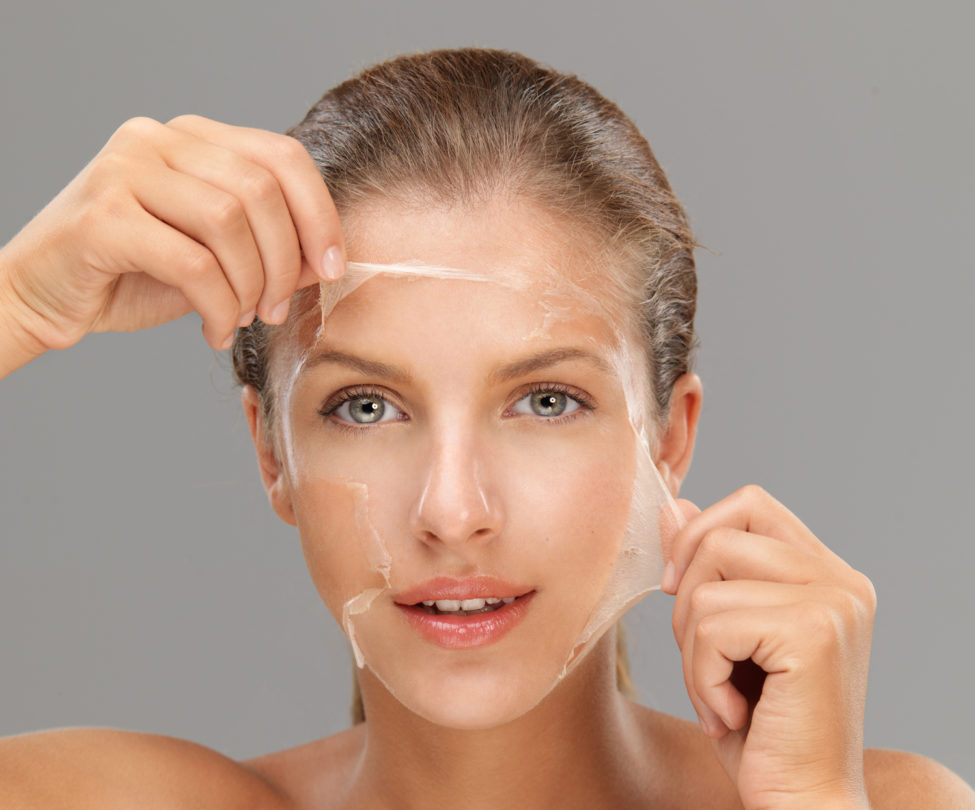Introduction To The Chemical Peel Treatment In Pakistan
Everyone dreams of having smooth and glowing skin. A chemical peel treatment can help achieve this. It is a popular skincare treatment that removes dead skin cells and improves skin texture. In Pakistan, many people are opting for chemical peel treatments to enhance their skin’s appearance. This article will provide you with everything you need to know about chemical peel treatments in Pakistan. We will discuss what chemical peels are, their benefits types, the procedure aftercare, and who should consider this treatment. Let’s dive in and explore how chemical peel treatments can give you the smooth and glowing skin you desire!
What is a Chemical Peel?
A chemical peel is a skin treatment that uses a chemical solution to remove the top layers of the skin. This process helps to reveal fresher, healthier skin underneath. Chemical peels can improve the appearance of fine lines, wrinkles, acne scars, and uneven skin tone. They can also help with sun damage and age spots. The treatment can be done on the face, neck, or hands, depending on the desired results.
How Does a Chemical Peel Work?
Chemical peels work by applying a solution to the skin that causes the top layer to peel off. The peeling process removes dead skin cells and stimulates the production of new skin cells. This results in smoother, brighter, and more youthful-looking skin. The depth of the peel depends on the type of chemical used and the strength of the solution.
Types of Chemical Peels
There are three main types of chemical peels: superficial, medium, and deep. Each type targets different skin concerns and has varying levels of intensity. Let’s look at each type in more detail.
1. Superficial Peels
Superficial peels, also known as light peels, are the mildest form of chemical peels. They use mild acids, like alpha-hydroxy acid (AHA) or beta-hydroxy acid (BHA), to gently exfoliate the outer layer of the skin. Superficial peels are suitable for all skin types and are ideal for treating minor skin issues like mild acne, fine lines, and uneven skin tone. They require little to no downtime, making them a popular choice for those with busy schedules.
2. Medium Peels
Medium peels penetrate deeper into the skin than superficial peels. They use stronger acids, like glycolic acid or trichloroacetic acid (TCA), to remove the outer and middle layers of the skin. Medium peels are effective for treating moderate skin issues, such as acne scars, deeper wrinkles, and uneven pigmentation. They may cause some redness and peeling, and recovery can take up to a week.
3. Deep Peels
Deep peels are the most intense type of chemical peel. They use strong acids, such as phenol, to deeply penetrate the skin and remove damaged skin cells. Deep peels are used to treat severe skin issues like deep wrinkles, severe sun damage, and precancerous growths. Because they are so powerful, deep peels require a longer recovery time and should only be done by a trained professional. The results of deep peels are dramatic and long-lasting, but the procedure is more invasive and has a higher risk of side effects.
Benefits of Chemical Peel Treatment
Chemical peel treatments offer several benefits for the skin. Here are some of the key advantages:
1. Improves Skin Texture
Chemical peels can smooth out rough skin and improve overall texture. This is especially beneficial for those with acne scars, fine lines, or uneven skin.
2. Reduces Wrinkles and Fine Lines
By removing the top layer of skin, chemical peels help reduce the appearance of fine lines and wrinkles. This makes the skin look younger and more refreshed.
3. Treats Acne and Acne Scars
Chemical peels can help treat acne by unclogging pores and reducing inflammation. They also fade acne scars by removing damaged skin and promoting new cell growth.
4. Evens Skin Tone
Chemical peels can improve uneven skin tone caused by sun damage, age spots, or melasma. The treatment helps to lighten dark spots and create a more uniform complexion.
5. Boosts Collagen Production
Chemical peels stimulate the production of collagen, a protein that keeps the skin firm and elastic. Increased collagen production helps reduce signs of aging and keeps the skin looking youthful.
The Chemical Peel Procedure
The chemical peel procedure is relatively simple and typically takes about 30 minutes to an hour, depending on the type of peel. Here is what you can expect during the procedure:
1. Consultation
Before the procedure, you will have a consultation with a skincare professional. They will assess your skin and discuss your concerns and goals. This helps them determine the best type of peel for you.
2. Preparing the Skin
Your skin will be cleaned thoroughly to remove any dirt, oil, or makeup. In some cases, a pre-peel solution may be applied to prepare your skin for the treatment.
3. Applying the Chemical Solution
The chemical solution is applied to the skin using a brush or cotton applicator. You may feel a slight tingling or burning sensation as the solution works to exfoliate the skin.
4. Neutralizing the Solution
After a few minutes, the chemical solution is neutralized or removed. This stops the peeling process and helps soothe the skin.
5. Aftercare
After the peel, a soothing ointment or moisturizer is applied to the skin to keep it hydrated and protected. You may be given specific aftercare instructions to follow at home, such as avoiding sun exposure and using gentle skincare products.
Aftercare Tips for Chemical Peels
Proper aftercare is crucial for getting the best results from your chemical peel. Here are some tips to follow after your treatment:
1. Keep Your Skin Hydrated
Moisturize your skin regularly to keep it hydrated and prevent dryness. Use a gentle, hydrating moisturizer that is free of harsh chemicals or fragrances.
2. Avoid Sun Exposure
Your skin will be more sensitive to the sun after a chemical peel. Avoid direct sun exposure and wear sunscreen with at least SPF 30 to protect your skin.
3. Do Not Pick or Peel Your Skin
It is normal for your skin to peel after a chemical peel, but it is important not to pick or peel it off. Let the skin shed naturally to avoid scarring or infection.
4. Use Gentle Skincare Products
Avoid using harsh skincare products, such as exfoliants or retinoids, for at least a week after your peel. Stick to gentle cleansers and moisturizers to avoid irritating your skin.
5. Follow Your Skincare Professional’s Advice
Your skincare professional will provide you with specific aftercare instructions based on the type of peel you received. Follow their advice carefully to ensure the best results and avoid complications.
Who Should Consider Chemical Peel Treatment?
Chemical peel treatment is suitable for most people, but it is especially beneficial for those with certain skin concerns. Here are some signs that you may be a good candidate for a chemical peel:
1. Uneven Skin Tone
If you have sun damage, age spots, or melasma, a chemical peel can help even out your skin tone and reduce dark spots.
2. Acne-Prone Skin
If you struggle with acne or have acne scars, a chemical peel can help unclog pores, reduce inflammation, and fade scars.
3. Fine Lines and Wrinkles
If you are concerned about fine lines and wrinkles, a chemical peel can help reduce their appearance and make your skin look smoother and younger.
4. Dull Skin
If your skin looks dull and tired, a chemical peel can help brighten your complexion and give your skin a healthy glow.
5. Rough or Textured Skin
If you have rough or textured skin, a chemical peel can help smooth it out and improve its overall texture.
Final Thoughts
Chemical peel treatment in Pakistan is a great way to achieve smooth, glowing skin. With different types of peels available, you can find the right one to suit your skin concerns and goals. Whether you want to reduce wrinkles, treat acne scars or improve uneven skin tone a chemical peel can help. Remember to consult with a skincare professional to determine the best peel for you and follow proper aftercare to ensure the best results. With the right treatment and care you can enjoy healthier, more radiant skin!




